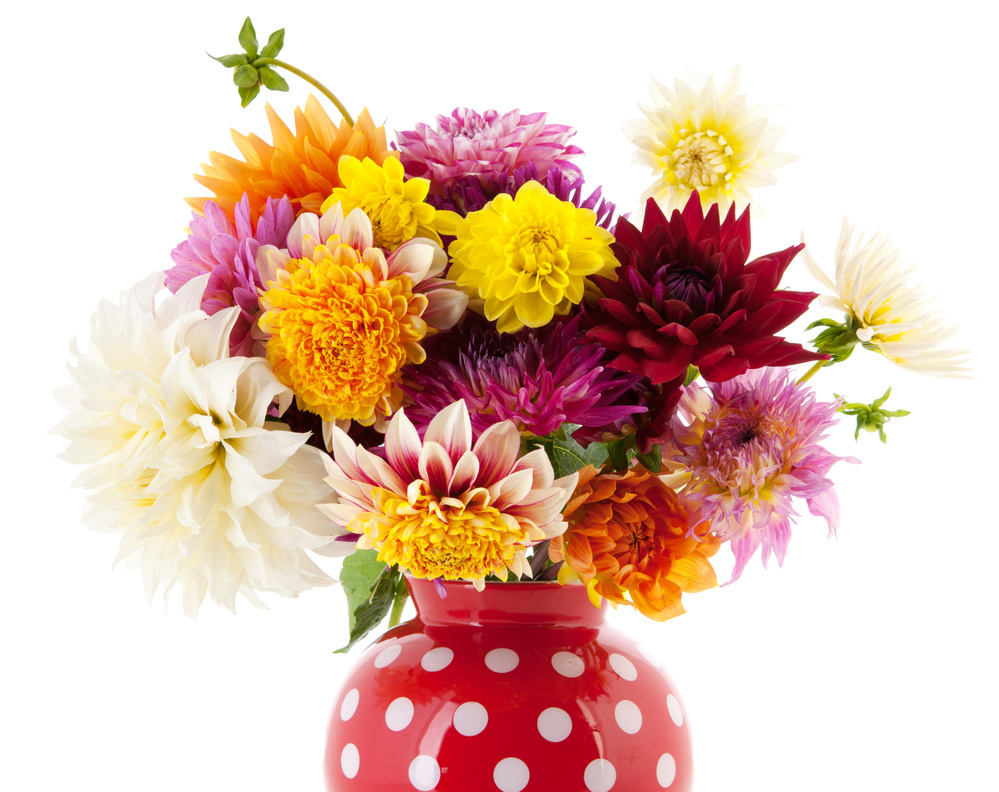Dahlias are one of my wife Nancy’s favorite cut flowers, with big blossoms in many colors and in 19 different shapes. While a perennial in warmer climates, they are not winter hardy in Maine, so they involve a lot of work. But they are worth it.
Judy Stallworth of West Bath grows dahlias because she loves them. As a side benefit, she cuts the blossoms to be used on the tables of the Portland restaurants owned by her son, Harding Lee Smith, so she grows more of them than most gardeners would need.
Stallworth, who is treasurer of the Garden Club Federation of Maine, and Suzanne Bushnell, the president of the club, spoke about dahlias for the Cape Elizabeth Garden Club in April. Though I attended, I forgot to take notes, so I telephoned her recently to refresh my memory.
Depending on where you live, you should plant your dahlias about now.
“You want to plant them after all danger of frost,” Stallworth said. “The soil should be 60 degrees.”
Dahlias grow from tubers, although they are sometimes called bulbs, that often sprout eyes during storage. Many people will plant tubers in pots indoors to get a jump on the season, and most local nurseries will have dahlia plants for sale now.
Stallworth says she buys locally whenever she can. One of her favorite bulb dealers is Endless Summer Flower Farm in Camden, and she will buy others as plants at local nurseries. Nationally one of the biggest dealers is Swan Island Dahlias in Oregon, and Nancy and I love the heritage bulbs sold by Old House Gardens in Michigan.
Stallworth said that some catalogs send you a clump of several dahlia bulbs, but Swan Island and Endless Summer send you just one tuber.
Dahlias need at least six to eight hours of sun every day and rich, well-drained soil. Stallworth gets a soil test done just about every year, and when the test says she is low on nitrogen, she adds cow manure. She does not add a lot of nitrogen during the growing season.
The tubers should be planted about 6 inches deep with the eyes pointing up. How far apart depends on how tall the dahlia grows. Bedding dahlias can be about a foot apart, while the tallest ones – some about 6 feet – should be planted about 3 feet apart.
“The secret is to plant them and don’t water them until they sprout up out of the ground,” Stallworth said. “A lot of people drown them by watering too early.”
But once the vegetation shows, dahlias need a lot of water.
Before you buy your dahlias, you must decide how you are going to use them. The huge dinner-plate blossoms are stunning in the garden, but they don’t work as cut flowers.
Catalogs usually will describe the dahlias as either being good as cut flowers or good in the garden.
Cutting dahlias actually gets the plant to produce more blossoms, and you have to deadhead the spent blossoms or the plant will stop producing.
Stallworth cuts the flowers early in the morning, placing the stems immediately in a bucket of hot water and letting them sit for a couple of hours before moving them to vases.
While some people treat dahlias as annuals, most gardeners will dig up the tubers and save them for the next year. This is where the hard work comes in, and it can be tricky.
You shouldn’t dig the dahlias until a week or two after they have been hit by a couple of hard frosts, Stallworth said. Otherwise the bulbs will continue growing once dug and then rot. After you get them out you have to shake the soil off and let them dry for a few days.
At this point, she says, it is important to separate the mother bulb from the children. The original bulb will not produce the same plant and flowers again, but the offspring bulbs will maintain the original character.
“The mothers all revert to orangey red and they don’t have strong stems,” she said. “If I get that orangey red, I throw that whole plant away because it is never going to get any better.”
She advises against procrastinating until spring, because it is easier to differentiate between the mother and children in the fall. The mother bulb will be fatter and darker, and maybe a bit wrinkled.
Some people hose the tubers down, leave them on a tarp in the garage overnight and bring them out in the sunlight during the day to dry out. It’s a good idea to write the variety (if you remember it) or at least the color on the tuber with indelible ink so you know what you have when you plant next year.
Once the tubers are completely dry, move them to a cool, dry place where they won’t freeze – and get ready to start the cycle all over again.
For now, though, I’m just looking forward to the blossoms.
Tom Atwell has been writing the Maine Gardener column since 2004. He can be contacted at 767-2297 or at tomatwell@me.com.
Send questions/comments to the editors.


